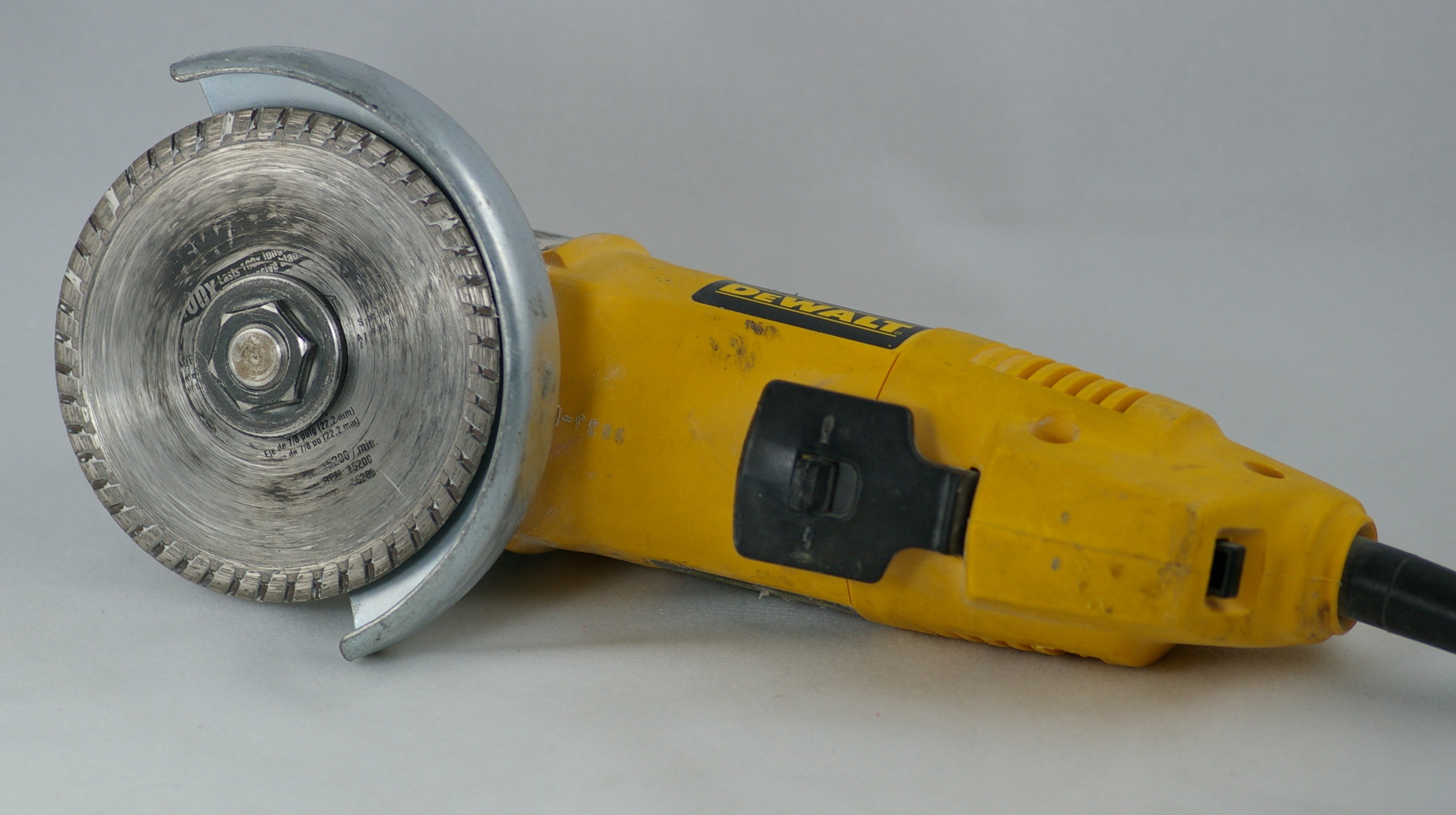Ceramic tile cutter on:
[Wikipedia]
[Google]
[Amazon]
Ceramic tile cutters are used to cut tiles to a required size or shape. They come in a number of different forms, from basic manual devices to complex attachments for power tools.
 The harder grades of ceramic tiles like fully vitrified porcelain tiles, stone tiles, and some clay tiles with textured surfaces have to be cut with a diamond blade. The diamond blades are mounted in:-
The harder grades of ceramic tiles like fully vitrified porcelain tiles, stone tiles, and some clay tiles with textured surfaces have to be cut with a diamond blade. The diamond blades are mounted in:-
 * Dedicated tile saws are designed to be used with water as a coolant for the diamond blade.
* They are available in different sizes.
* Adjustable fences for angled cuts and square cuts.
* Fence stops for multiple cuts of exactly the same size.
* Dedicated tile saws are designed to be used with water as a coolant for the diamond blade.
* They are available in different sizes.
* Adjustable fences for angled cuts and square cuts.
* Fence stops for multiple cuts of exactly the same size.
Image:Cut-ceramic-tile_2.jpg, Simple glass cutter used to cut ceramic tile.
Image:Ceramic-tile-tools.jpg, 100 mm (4") angle grinder with diamond blade, with tiling snips being used to cut holes in tiles.
Hand tools
Beam score cutters, cutter boards
The ceramic tile cutter works by first scratching a straight line across the surface of the tile with a hardened metal wheel and then applying pressure directly below the line and on each side of the line on top. Snapping pressure varies widely, some mass-produced models exerting over 750 kg. The cutting wheel and breaking jig are combined in a carriage that travels along one or two beams to keep the carriage angled correctly and the cut straight. The beam(s) may be height adjustable to handle different thicknesses of tiles. The base of the tool may have adjustable fences for angled cuts and square cuts and fence stops for multiple cuts of exactly the same size. The scoring wheel is easily replaceable.History
The first tile cutter was designed to facilitate the work and solve the problems that masons had when cutting hydraulic mosaic or encaustic cement tiles (a type of decorative tile with pigmented cement, highly used in 50s, due to the high strength needed because of the high hardness and thickness of these tiles). Over the time the tool evolved, incorporating elements that made it more accurate and productive. The first cutter had an iron point to scratch the tiles. It was later replaced by the current tungsten carbide scratching wheel. Another built-in device introduced in 1960 was the snapping element. It allowed users to snap the tiles easily and not with the bench, the cutter handle or hitting the tile with a knee as it was done before. This was a revolution in the cutting process of the ceramic world.Tile nippers
Tile nippers are similar to small pairs of pincers, with part of the width of the tool removed so that they can be fit into small holes. They can be used to break off small edges of tiles that have been scored or nibble out small chips enlarging holes etc.Glass cutter
A simple hand held glass cutter is capable of scoring smooth surface glazes allowing the tile to be snapped.Power tools
 The harder grades of ceramic tiles like fully vitrified porcelain tiles, stone tiles, and some clay tiles with textured surfaces have to be cut with a diamond blade. The diamond blades are mounted in:-
The harder grades of ceramic tiles like fully vitrified porcelain tiles, stone tiles, and some clay tiles with textured surfaces have to be cut with a diamond blade. The diamond blades are mounted in:-
Angle grinders
An angle grinder can be used for short, sometimes curved cuts. It can also be used for "L" shaped cuts and for making holes. It can be used dry and, more rarely, wet.Tile saws
 * Dedicated tile saws are designed to be used with water as a coolant for the diamond blade.
* They are available in different sizes.
* Adjustable fences for angled cuts and square cuts.
* Fence stops for multiple cuts of exactly the same size.
* Dedicated tile saws are designed to be used with water as a coolant for the diamond blade.
* They are available in different sizes.
* Adjustable fences for angled cuts and square cuts.
* Fence stops for multiple cuts of exactly the same size.
Gallery
References
See also
*Hand tool
A hand tool is any tool that is powered by hand rather than a motor. Categories of hand tools include wrenches, pliers, cutters, files, striking tools, struck or hammered tools, screwdrivers, vises, clamps, snips, hacksaws, drills, and kni ...
* Power tool
* Diamond tool
* Encaustic tile
* Porcelain tile
* Dimension stone
Dimension stone is natural stone or rock that has been selected and finished (e.g., trimmed, cut, drilled, ground, or other) to specific sizes or shapes. Color, texture and pattern, and surface finish of the stone are also normal requirements. A ...
* Glass tiles
* Quarry tile
Quarry tile is a building material, usually to inch (13 to 19 mm) thick, made by either the extrusion process or more commonly by press forming and firing natural clay or shales.American Society for Testing and Materials Standard ASTM C 242 ...
{{Stonemasonry
Mosaic
Mechanical hand tools
Hand-held power tools
Cutting tools
Grinding machines